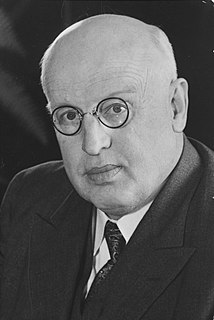
The Executive Council of Alberta, or more commonly the Cabinet of Alberta, is the Province of Alberta's equivalent to the Cabinet of Canada. The government of the province of Alberta is a constitutional monarchy and parliamentary democracy with a unicameral legislature—the Legislative Assembly, which consists of 87 members elected first past the post (FPTP) from single-member constituencies. The premier is normally a member of the Legislative Assembly, and usually draws the members of Cabinet from among the members of the Legislative Assembly. The legislative powers in the province however, lie with the Legislative Assembly of Alberta. Its government resembles that of the other Canadian provinces. The capital of the province is Edmonton, where the Alberta Legislative Building is located. Government is conducted after the Westminster model.

The Government of Alberta refers to the provincial government of the province of Alberta. Its powers and structure are set out in the Constitution Act, 1867.
Anders Olav Aalborg was a teacher and a politician from Alberta, Canada. He served in the Legislative Assembly of Alberta from 1948 to 1971 as a member of the Social Credit caucus, and served in the cabinets of Premier Ernest Manning and Harry Strom from 1952 to 1971.

The Klein Ministry was the combined Cabinet, chaired by Premier Ralph Klein, and Ministers that governed Alberta from the mid-point of the 22nd Alberta Legislature from December 14, 1992, to the mid-point of the 26th Alberta Legislature until December 14, 2006.

The Stelmach Ministry was the combined Cabinet, chaired by thirteenth Premier Ed Stelmach, and Ministers that governed Alberta shortly after the conclusion of the first session of the 26th Alberta Legislature from December 14, 2006, to the mid-point of the fourth session of the 27th Alberta Legislature on October 7, 2011.
The Alberta Social Credit leadership convention, 1968, took place in the Northern Alberta Jubilee Auditorium in Edmonton, Alberta, Canada, on December 4, 1968, to select a candidate to replace Ernest Manning as leader of the Social Credit Party of Alberta. Because Social Credit enjoyed a substantial majority in the Legislative Assembly of Alberta at the time and because convention dictates that the Lieutenant-Governor of Alberta asks the leader of the largest party in the legislature to form government, the contest was a de facto selection of the next Premier of Alberta. Harry Strom, long-time Minister of Agriculture and later Minister of Municipal Affairs in Manning's government, came out on top of a six-person field on the second ballot.
Henry Arild Ruste was a Canadian politician from Alberta. He served in the Legislative Assembly of Alberta from 1955 to 1975 as a member of the Social Credit Party. Ruste served as a cabinet minister in the governments of Premier Ernest Manning and Harry Strom from 1965 to 1971.

Harry Edwin Strom was the ninth premier of Alberta, from 1968 to 1971. His two-and-a-half years as Premier were the last of the thirty-six-year Social Credit dynasty, as his defeat by Peter Lougheed saw its replacement by a new era Progressive Conservative government. He is remembered as an honest, decent man who lacked the political skills of his predecessor, Ernest Manning, or of Lougheed.

The Redford Ministry was the combined Cabinet, chaired by fourteenth Premier Alison Redford, and Ministers that governed Alberta halfway through the fourth session of the 27th Alberta Legislature from October 7, 2011, to the early part of the second session of the 28th Alberta Legislature on March 23, 2014.

The Prentice Ministry was the combined Cabinet, chaired by 16th Premier of Alberta Jim Prentice, that governed Alberta from September 15, 2014 to May 24, 2015. It was made up of members of the Progressive Conservative Party (PC).
The Getty Ministry was the combined Cabinet, chaired by Premier Don Getty, and Ministers that governed Alberta from the mid-point of the 20th Alberta Legislature from November 1, 1985, to nearly the end of the 22nd Alberta Legislature until December 14, 1992.
The Lougheed Ministry was the combined Cabinet, chaired by Premier Peter Lougheed, and Ministers that governed Alberta from the 17th Alberta Legislature from September 10, 1971, to mid-point of the 20th Alberta Legislature until November 1, 1985.

The Manning Ministry was the combined Cabinet, chaired by Premier Ernest Manning, and Ministers that governed Alberta from the part way through the 9th Alberta Legislature from May 31, 1943, to mid-point of the 16th Alberta Legislature on December 12, 1968.

The Aberhart Ministry was the combined Cabinet, chaired by Premier William Aberhart, and Ministers that governed Alberta from the 8th Alberta Legislature from September 3, 1935, to mid-point of the 9th Alberta Legislature on May 23, 1943.

The Reid Ministry was the combined Cabinet, chaired by Premier Richard Gavin Reid, and Ministers that governed Alberta from part way through the 7th Alberta Legislature from July 10, 1934, to September 3, 1935.

The Brownlee Ministry was the combined Cabinet, chaired by Premier John Edward Brownlee, and Ministers that governed Alberta from part way through the 5th Alberta Legislature from November 23, 1925, to part way through the 7th Alberta Legislature on July 10, 1934.

The Stewart Ministry was the combined Cabinet, chaired by Premier Charles Stewart, and Ministers that governed Alberta during the 4th Alberta Legislature from October 30, 1917, to August 13, 1921.

The Sifton Ministry was the combined Cabinet, chaired by Premier Arthur Sifton, and Ministers that governed Alberta party way through the 2nd Alberta Legislature beginning on May 26, 1910, through the 3rd Alberta Legislature to October 30, 1917.

The Rutherford Ministry was the combined Cabinet, chaired by Premier Alexander Cameron Rutherford, and Ministers that governed Alberta from province's Confederation into Canada on September 2, 1905, to party way through the 2nd Alberta Legislature on May 26, 1910.













